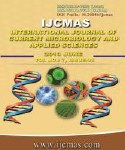


 National Academy of Agricultural Sciences (NAAS)
National Academy of Agricultural Sciences (NAAS)

|
PRINT ISSN : 2319-7692
Online ISSN : 2319-7706 Issues : 12 per year Publisher : Excellent Publishers Email : editorijcmas@gmail.com / submit@ijcmas.com Editor-in-chief: Dr.M.Prakash Index Copernicus ICV 2018: 95.39 NAAS RATING 2020: 5.38 |
Tribal farmers in Chhattisgarh’s Bilaspur and Surguja divisions, primarily from Scheduled Tribes (e.g., Gond, Baiga, Oraon), rely on agriculture for livelihood, cultivating crops like rice, pulses, and millets under rainfed conditions. This review synthesizes studies on agricultural practices among these farmers, focusing on land preparation, seed selection, sowing, nutrient management, irrigation, pest control, and harvesting. Data from the Chhattisgarh Agriculture Department and ICAR studies indicate low adoption of modern practices due to limited access to inputs, irrigation (23% coverage), and extension services. Statistical analysis of yield data (2010–2017) shows rice yields of 800–1,200 kg/ha in rainfed systems, with pulses like moong yielding 600–900 kg/ha. ANOVA reveals significant yield differences (p<0.05) between integrated nutrient management (INM) and traditional practices. Challenges include erratic rainfall, soil nutrient deficiencies, and socio-economic constraints like illiteracy (49% in Surguja). The study highlights the role of Krishi Vigyan Kendras (KVKs) in promoting high-yielding varieties (HYVs) and IPM. Future suggestions include enhancing irrigation, scaling up KVK training, and promoting agroforestry to improve tribal livelihoods and sustainability.
 |
 |
 |
 |
 |